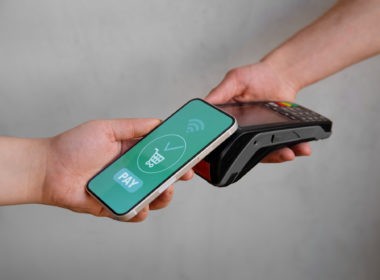In February 2023, 87,000 Android apps were launched through the Google Play Store. Simultaneously, 31,500 iOS apps were made publicly available through the Apple App Store in March 2023.
Businesses worldwide are churning out apps regularly to enhance customer experience and gain loyalty to improve their bottom line. But with new apps being made available daily, launching a new app is difficult, especially if you’re releasing one in a popular category, such as health and fitness.
So what can you do to ensure your app has an impressive launch? Formulate a sound app launch campaign.
Your Ultimate Guide to Plan for a Successful App Launch Campaign
In the US, individuals spend almost 4.2 hours or approximately all of their leisure time on apps daily. The reason why consumers are flocking to apps is simple: they want a superior user interface and experience.
But the challenges lie therein. Though you’ll start keeping your customers in mind and the problems you want to solve through your app, you might get pulled in multiple directions simultaneously, getting distracted midway.
This will negatively impact your app’s launch. It will barely get on anyone’s radar, making it difficult for you to promote and market it afterward. So if you want to gain new customers, improve your brand loyalty, and position yourself favorably, ensure that your app launch is epic.
Though to do that, you’ll need an actionable launch campaign.
6 Tips to formulate a successful app launch campaign
Launching an app takes a lot of time, effort, and money. Add to that changing customer sentiments and demands, and you’ve got a daunting task ahead of you, even more so if it’s your first launch.
Though you can research and devise some best practices, it will monopolize your time and effort, taking your eye off the prize: developing an excellent app. But don’t worry. Here’s your guide on how to launch an app in 2023 so that you can focus on developing your app in peace.
1. Surmount your app’s UX design challenges
App launch campaigns usually begin with the market, competitor, and user persona research and get stuck on the app’s UX design.

Conducting in-depth market research to understand the current trends is an excellent way to stay up-to-date with the latest trends. Using your competitor’s apps and understanding their pros and cons will help you make yours stand out.
Similarly, understanding your user’s demands and persona will let you position your app accordingly. Analyzing data from these researches will help you make your app stand out from its peers. But you won’t be able to gain an advantage from these learnings if your UX design is underwhelming.
So ensure that your design doesn’t just focus on the aesthetics or the branding but also on the app’s functionality and usability.
Since UX design directly impacts your users’ experience and defines their interaction with your brand and product, your app must strike a balance between aesthetics, functionality, and usability.
How can your team surmount UX design challenges?
You must ascertain that your team has enough practice before focusing on developing the app in earnest. You can achieve this through realistic UX design challenges to pit their design skills against real-world scenarios.
These interactive challenges are a great option since they:
- allow your design team to pick up and complete a design task per the instructions while leaning on comprehensive learning resources.
- support selection of specific challenges to refine your app’s UX design, such as usability, dark mode, and color palette tests.
The best part is that they will receive feedback on their design challenges from expert designers to understand how their design will fare among users. Receiving constructive feedback will empower them to hone their strengths and work on their weak areas.
This exercise will help you figure out your UX design challenges and develop an effective app that catches the eye.
2. Build some hype for your app before its launch
Once you’ve got your app prototype ready, it’s time to set the date and time for its official launch. After you set a date, pick one for a soft launch too. A soft launch will prove beneficial if you’d like some honest feedback on your app and want to fix all issues and bugs before the official release date.
However, keep your soft launch invite-only to make the most of it. Publicize this event as exclusive and keep it under wraps to amp up the mysterious vibe. Soon you’ll have enthusiastic beta users clamoring to get an invite to the event.

But the question arises: besides your friends and family—some of whom might not even qualify for testing the app—how can you invite trusted users from your contacts to your soft launch?
Hunt for your Rolodex and look at your email contacts to single out fellow entrepreneurs, consultants, and loyal customers (if this isn’t your first launch) or reputed beta users who’d be happy to use the app and give you honest feedback. Understand their feedback and tweak your app continuously till you fix all the issues.
Leverage social media and your email list to promote your app’s launch
Now, it’s time to create some buzz around your app’s launch. Blasting your app’s launch message all over your social media channels and website is the best way to get the word out. Don’t leave any stone unturned. Take advantage of owned, earned, and paid media to get everyone eager to try it out themselves.
Ask excited individuals to join your email waiting list. Entice them with BTS (behind-the-scenes) content, giveaways, and exclusive updates about the launch. To manage your email list adequately, follow some best practices.
Undertaking email list management best practices will help you:
- develop relatable emails to nourish your list,
- improve engagement rate,
- gather deep insights, and
- build meaningful relationships.
If you cultivate positive relations with your subscribers, they’ll be your app’s champions and contribute to its hype through positive word of mouth.
3. Select the launch platforms
While Apple App Store and Google Play Store are a no-brainer, it’s best to expand your options, such as Amazon Appstore, Samsung Galaxy Store, and GetJar. Find out the platforms your target audiences prefer and set the ball rolling for your app’s launch.
Based on your selection, review the rules and regulations to get your app approved before its launch. Moreover, consider the cost of putting your app on an app store. Though you can choose multiple platforms, sticking to one or two might be your best bet if you don’t have the necessary resources to dedicate to each platform.

4. Determine the success criteria and identify metrics to measure it
While your primary goal will be to launch your app successfully, only you can set the success criteria. Everyone has a different definition of success, so determine the KPIs (key performance indicators) that will indicate your app launch’s success.
You can choose from download rates, app store ratings, early reviews, retention rates, and other metrics. But don’t forget to set measurable criteria. The success criteria will influence your product roadmap, so choose them wisely. If you need assistance, you can integrate software to keep track of your chosen metrics.
5. Launch your app
After all your hard work, it’s finally time to get your app’s show on the road. Release posts and reels on your social media channels and send a customized email to your loyal subscribers for an epic app launch.
Focus on identifying your app’s initial performance and check feedback to fix all issues and bugs quickly. Monitor your app’s ratings and see if you can improve it by enhancing your users’ experience. Strive to receive at least four stars—out of five—from your users to establish your app’s presence on the launched platform.
6. Monitoring your app’s performance post-launch
Generally, an app launch campaign comes to an end with the app’s launch, but if you want your app to become a user favorite, you must observe its performance post-launch too.
Your app might be perfect in every sense, but the myriad of options available on the app stores make it incredibly challenging for your targeted users to choose your app. So they turn to their most-trusted source—Google—to answer all their questions. Or, in some cases, their friends and family.
Investing in your app’s SEO rankings and promoting its features and functionalities will go a long way in acquiring new users. However, discoverability is just one part of a complex puzzle.
Even if you somehow manage to get users to download your shiny new app, how do you ensure their loyalty? After all, it’s quite easy for them to get lost in the options and flit among various apps regularly.
Employ techniques like email marketing, social media marketing, and push notifications. Build social communities to connect with your users and engage them. Higher engagement rates will lead to more retention and breed user loyalty.
Higher visibility and loyalty will allow you to monetize your app through paid downloads, advertisements, and in-app purchases.
Curate a sound app launch strategy for continued success
Planning every step of your app launch campaign is crucial for its success. This will give you an actionable strategy you can implement to springboard its launch and let you efficiently handle all the activities leading up to the big day.
Remember that your launch campaign doesn’t necessarily end with your app’s launch. Observing its post-launch performance can help you build a loyal user base to monetize your app and generate revenue.
⸻ Author Bio ⸻

Arjun Ruparelia
Email: ruparelia.arjun@gmail.com
An accountant turned writer, Arjun writes financial blog posts and research reports for clients across the globe. Arjun has five years of financial writing experience across verticals. He is a CMA and CA (Intermediate) by qualification.












